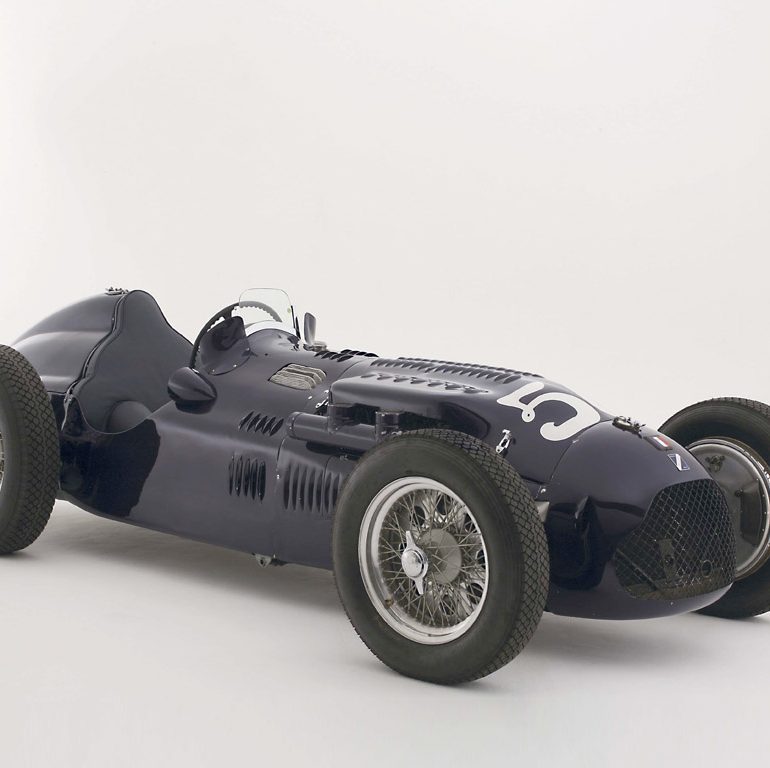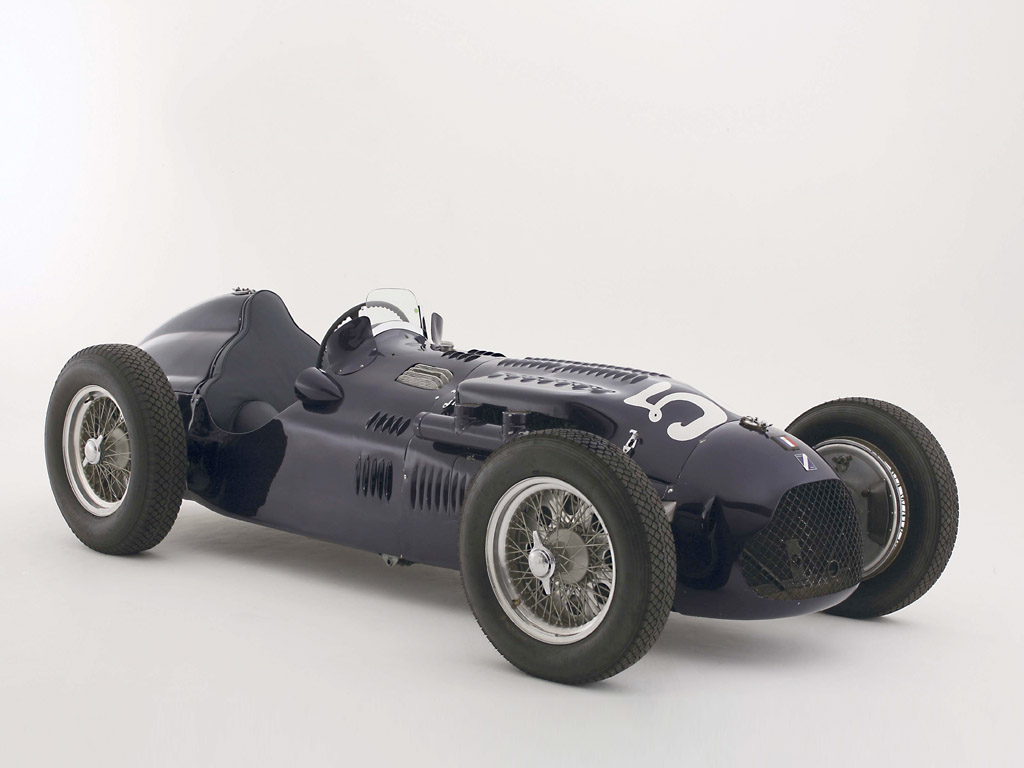1948 Talbot-Lago T26 Course
Despite being largely pieced together by pre-war components, the Talbot-Lago T26 raced for six years and took many victories. Most of these were taken with the striking T26C in Grand Prix, but the most remarkable achievement was an overall win at the 24 Hours of LeMans with a thinly disguised T26C.
The Talbot story begins in the 1930s when Antony Lago revived the marque from the ashes took the best aspects of the existing engineering to go racing. He used their independent front suspension setup and a versatile straight six engine to develop sports and grand prix cars that garnished much success, but usually lagged behind Mercedes-Benz and Auto Union.
After the war, the French were keen to race and new regulations that allowed 4.5 liter unblown engines suited the Talbot straight-6. Carlo Marchetti was entrusted to increase the original engine’s displacement. He further refined the design in 1948 with a new push-rod valve train and twin-spark ignition.
Similar to prewar convention, this engine was stuffed in a box steel chassis which was sprung by wishbones upfront and an underslung rigid axle in the rear. Braking was by large finned drums with air scoops to aid cooling and power was sent to the rear wheels through a Wilson preselector gearbox that occupied large portion of the cockpit.
The T26C made its competition debut at the 1948 Monaco Grand Prix. It retired after 16 laps with engine trouble, but the follow-up Coupe du Salon at Montlh�ry gave a 1-2-3 for the Talbot-Lagos of Rosier, Levegh and Cabantous. The first major victory came at the 1949 Belgian Grand Prix with Rosier at the wheel who didn’t stop for the entire three and half hours. Superior fuel consumption and reliability helped him against savvy competition like the Alfa Romeo 4CLT with it’s two-stage supercharged engine. Rosier’s skill in the Talbot-Lago secured him the French Championship that year which also included a signature win at the French Grand Prix in Reims by Chiron.
During the following seasons, Talbot Lago continued their success with upgrades that included horizontal 50HN Zenith downdraft carburetors, increased 11:1 compression ratio and a stronger crankshaft. Mid-season these were joined by new twin spark, 12 plug cars, which offered 280 bhp at 5,000rpm. They also had a repositioned driveshaft that let the driver driver’s position drop significantly and Lockheed 19 inch drum brakes. 1950 ended on a high note once again, with three major Grand Prix victories as well as the coveted 24 Hours of Lemans.
The T26Cs racing ended when the switch to Formula 2 in 1952 halted development. The company would eventually fold and production ceased when Simca took over during 1959.
In Detail
| submitted by | Richard Owen |
| production | 14 |
| engine | Aluminum, Twin Plug Straight-6 w/Dry Sump Lubrication |
| position | Front Longitudinal |
| valvetrain | Pushrod OHV, 2 Valves Cyl |
| fuel feed | 3 Zenith 50 HN DD Carburetors |
| displacement | 4482 cc / 273.5 in³ |
| bore | 93 mm / 3.66 in |
| stroke | 110 mm / 4.33 in |
| compression | 11.0:1 |
| body / frame | Aluminum over Steel Box Section Chassis |
| driven wheels | RWD |
| front brakes | Lockheed Hydraulic Drums |
| rear brakes | Lockheed Hydraulic Drums |
| steering | Worm & Nut |
| f suspension | Wishbones w/Transverse Leaf Springs |
| r suspension | Live Axle w/Semi-Elliptic Springs, Friction Dampers |
| curb weight | 950 kg / 2094 lbs |
| wheelbase | 2502 mm / 98.5 in |
| front track | 1372 mm / 54.0 in |
| rear track | 1308 mm / 51.5 in |
| length | 4077 mm / 160.5 in |
| width | 1308 mm / 51.5 in |
| transmission | Wilson Preselector 4-Speed |
| top speed | ~270.4 kph / 168 mph |
| designers | Walter Becchia (Engine), |
| race victories | 1949 Belgian Grand Prix 1949 French Grand Prix |





